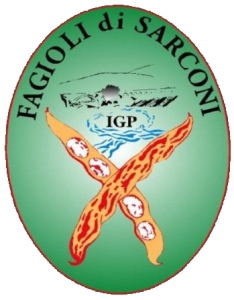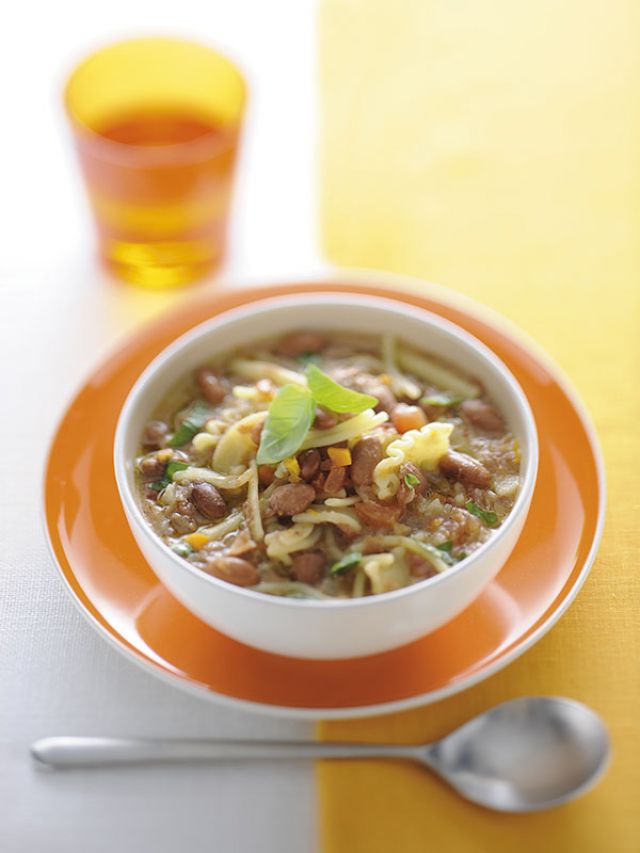 The production of the beans of Sarconi, a municipality in the heart of Lucania, is small, but characterized by a very high quality. These beans are famous for their sweet taste as well as their particular digestibility and softness. These high and specific qualities have been awarded since 1996 with the European trademark Protected Geographical Indication.
The production of the beans of Sarconi, a municipality in the heart of Lucania, is small, but characterized by a very high quality. These beans are famous for their sweet taste as well as their particular digestibility and softness. These high and specific qualities have been awarded since 1996 with the European trademark Protected Geographical Indication.
The beans of Sarconi have a round or oval shape and their colour varies from pale yellow to white, to other colours, but always with a typical waxy appearance, or with dark stripes and spots in different colours. Besides their intense and at the same time sweet flavour, they are appreciated because they do not require long cooking, thanks to their thin skin and richness in starch.
Lucania, the earth of flavour
The oring area of the beans of Sarconi includes 11 municipalities of the ‘Alta Valle dell’Agri’ in the Basilicata Region: Sarconi, Grumento, Moliterno, Marsico Nuovo, Marsicovetere, Montemurro, Paterno, San Martino d'Agri, Viggiano, Tramore, and Spinoso. All of them are in the heart of the National Park ‘Parco Nazionale dell’Appennino Lucano’. It is a territory characterized by a very high natural value, a southern Italian land with fertile fields which extend above m 600, with cool summers and plenty of water. These features, combined with the traditional cultivation techniques, allow obtaining a unique product. The average yearly production consists in 500,000 packs and just over 1000 quintals. It is a small production, which however arouses a lot of interest with regard to the export market. England, Germany, and Switzerland are the Countries where most of these beans arrive, even though this phenomenon is just beginning.
 The secret is water and cold
The secret is water and cold
The secret of the flavour is all in water. Numerous studies have shown that the quality of water (some of the most famous mineral waters of Italy arrive from these areas) is at the roots of the botanic identity of the beans of Sarconi. The freshness and the mineral composition of the water allow maintaining a high content in simple sugars in the seeds, giving a characteristic sweet taste. In addition, the low summer temperatures at night lengthen the time required to sugars for their transformation into starch. The concentration of sugars and their slowness in becoming starch is the secret of the natural chemical which allows these pulses to become a tender and sweet concentrate of bean flavour. 
Red Beans Cannellini
They have a cylindrical, elongated seed, a pale colour with large red-purple spots, sometimes black and non-uniform. In cooking they are recommended for a single course with pasta or alone as a side dish.
White Beans Cannellini
Characterized by a cylindrical, elongated and tapered seed, white with small dark spots. In cooking they are used for preparing side dishes, salads, and cold dishes, but also with pasta.
Ciuoto (Regina) Bean
With round-ovoid seed, not very big. It is the oldest variety and it is considered the excellence of the superior quality Borlotti. It is suitable for the most varied uses, including pasta and beans, pulse soups, in salad with onions of Tropea.
Nasello Red Bean
An elongated seed with tapered or flattened end, white background with red-purple irregular stains. In cooking it can be used for side dishes, or appetizers. Its combination with rice is very good.
Tondino White Bean
A round-oval seed, not very big, and a beautiful uniform white colour. It is one of the best varieties for both production and organoleptic characteristics. It allows a quick cooking thanks to its very tender peel. It is excellent with mussels and short pasta.
Tabacchino Bean
A round-oval seed with the typical tobacco colour, from which its name derives. This bean has always been cultivated and has a very high content in fibre. It is highly digestible and it is studied for its healthy properties for metabolism. In coking it gives its best in soups, alone as a side dish, or accompanied with vegetables.
Verdolino Bean
Characterized by a round – oval seed and an unmistakable light green colour. It is much appreciated for its delicate taste and especially tender skin. It is recommended with pasta or rice and in soups.

The logo, a symbol of Lucania
 The beans of Sarconi are packaged in modified atmosphere, in g 500 polypropylene packagings or cotton bags. When fresh, they are marketed in wooden crates, where the logo is affixed, with a maximum capacity of kg 15. In the form of dry grain they must be marketed under the same logo, in g 250 or g 500 packs (in fabric, paper, or plastic).
The beans of Sarconi are packaged in modified atmosphere, in g 500 polypropylene packagings or cotton bags. When fresh, they are marketed in wooden crates, where the logo is affixed, with a maximum capacity of kg 15. In the form of dry grain they must be marketed under the same logo, in g 250 or g 500 packs (in fabric, paper, or plastic).
The logo, oval with a light green background, contains the words 'Fagioli di Sarconi' under which an ancient aqueduct with ploughed fields is depicted. From it, two cobalt blue stylized courses of water with the shape of a rosette wind. Within this logo, the IGP mark is inserted. The writings 'Fagioli Sarconi' and 'IGP', obtained with Palatino type character, are black.
 A typical Italian recipe is pasta and beans. Using beans of Sarconi, especially the ‘Tabacchino’ and the ‘Tondino’ variety, it is possible to prepare a first course which is a concentrate in flavour and health. For 4 people, soak for 12 hours g 250 dried beans, which are then boiled in salted water for 40 minutes. Prepare a vegetable broth, finely chopping 1 stalk of celery, 1 shallot, and 2 dried tomatoes. Brown for a very short time in abundant extra virgin olive oil and add 4 tablespoons of peeled tomatoes. Cook for 3 minutes and then add abundant warm water, salt to taste and add the previously cooked beans. Boil for 15 minutes under a very low flame. Separately, cook g 100 short pasta, which is then added to the broth. Mix ‘Pasta e Fagioli’ for a few minutes and serve it hot, sprinkled with pepper.
A typical Italian recipe is pasta and beans. Using beans of Sarconi, especially the ‘Tabacchino’ and the ‘Tondino’ variety, it is possible to prepare a first course which is a concentrate in flavour and health. For 4 people, soak for 12 hours g 250 dried beans, which are then boiled in salted water for 40 minutes. Prepare a vegetable broth, finely chopping 1 stalk of celery, 1 shallot, and 2 dried tomatoes. Brown for a very short time in abundant extra virgin olive oil and add 4 tablespoons of peeled tomatoes. Cook for 3 minutes and then add abundant warm water, salt to taste and add the previously cooked beans. Boil for 15 minutes under a very low flame. Separately, cook g 100 short pasta, which is then added to the broth. Mix ‘Pasta e Fagioli’ for a few minutes and serve it hot, sprinkled with pepper.
